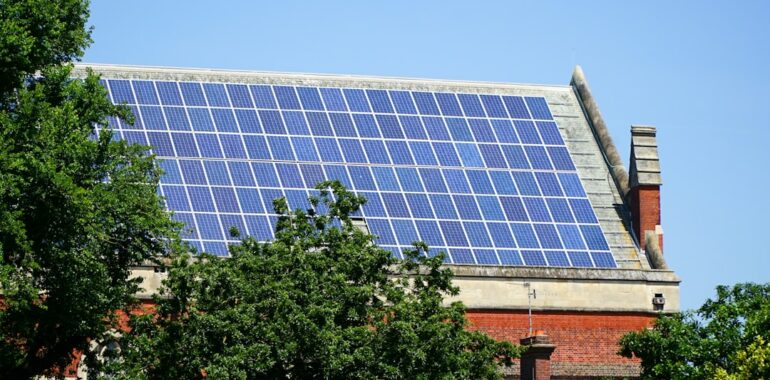DOE Grants: $130 Million Boost for Early-Stage Solar Research Projects

Meta Description: Discover how the U.S. Department of Energy’s $130 million renewable energy funding initiative is propelling early-stage solar research, fostering economic growth, and enhancing energy security.
Introduction
The U.S. Department of Energy (DOE) has announced a substantial investment of up to $130 million aimed at advancing early-stage solar technologies. This significant infusion of renewable energy funding underscores the nation’s commitment to achieving affordable, reliable, and sustainable energy solutions. By targeting innovative research in solar photovoltaics (PV), concentrating solar power (CSP), and other critical areas, the DOE aims to bolster economic growth and strengthen the country’s energy security.
Overview of the DOE Funding Initiative
The DOE’s latest funding initiative is a cornerstone of the Administration’s “all-of-the-above” energy strategy. With a focus on early-stage research and development, the $130 million allocation is designed to accelerate innovations that make solar energy more accessible and efficient. This funding is strategically distributed across five key research areas:
- Photovoltaics (PV) Research and Development
- Concentrating Solar-Thermal Power (CSP) Research and Development
- Balance of Systems Soft Costs Reduction
- Innovations in Manufacturing: Hardware Incubator
- Advanced Solar Systems Integration Technologies
Impact on the Renewable Energy Funding Landscape
This substantial investment in solar research fundamentally transforms the renewable energy funding landscape. By reducing the costs associated with solar technologies and enhancing their reliability, the DOE’s initiative paves the way for broader adoption of solar energy across various sectors. These advancements not only contribute to environmental sustainability but also drive economic growth by creating jobs and stimulating domestic manufacturing.
Detailed Breakdown of Funding Areas
1. Photovoltaics (PV) Research and Development ($26 Million)
The PV research aims to halve the cost of solar photovoltaics, making solar electricity more affordable for consumers and businesses. Key focus areas include:
- Performance Enhancement: Improving the efficiency of PV cells and modules.
- Cost Reduction: Lowering material and manufacturing expenses.
- Reliability Improvement: Ensuring long-term durability of PV systems.
2. Concentrating Solar-Thermal Power (CSP) Research and Development ($33 Million)
CSP research is directed towards enabling solar power generation regardless of time or season. Objectives include:
- Energy Storage Innovations: Developing technologies that allow CSP to store thermal energy for extended periods.
- Cost Efficiency: Reducing manufacturing costs for CSP technologies.
- Autonomous Operations: Creating solutions for solar fields to operate without human intervention.
3. Balance of Systems Soft Costs Reduction ($17 Million)
This area focuses on minimizing the non-hardware expenses associated with solar installations, such as:
- Siting and Permitting: Streamlining regulatory processes.
- Financing Solutions: Addressing financial barriers for developers and consumers.
- Compliance Efficiency: Simplifying adherence to local codes and regulations.
4. Innovations in Manufacturing: Hardware Incubator ($10 Million)
Supporting early-stage companies with innovative product ideas aimed at:
- Lowering Solar Costs: Developing affordable manufacturing techniques.
- Commercialization: Facilitating the transition from prototype to market-ready products.
- Strengthening US Manufacturing: Enhancing the domestic solar manufacturing sector.
5. Advanced Solar Systems Integration Technologies ($44 Million)
Enhancing the integration of solar energy into the power grid involves:
- Grid Operator Tools: Improving capabilities for managing increased solar generation.
- Cybersecurity Measures: Protecting PV inverters and sensors from cyber threats.
- System Resilience: Ensuring reliable and secure solar energy distribution.
Benefits for Researchers and Academia
The DOE’s funding initiative opens numerous opportunities for researchers and academic institutions. By providing financial support for cutting-edge solar research, the DOE enables breakthroughs that can lead to commercialization and widespread adoption. Academic collaborations foster innovation, while researchers gain access to resources that drive technological advancements in the solar sector.
Future Implications for the Solar Industry
The infusion of $130 million in renewable energy funding is poised to revolutionize the solar industry. Anticipated outcomes include:
- Cost Reductions: Significant decreases in the cost per kilowatt-hour for both PV and CSP systems by 2030.
- Domestic Manufacturing Growth: Strengthened U.S. solar manufacturing capabilities, reducing reliance on foreign imports.
- Enhanced Grid Integration: Improved methods for incorporating solar energy into the national grid, ensuring stability and resilience.
How to Apply and Get Involved
Researchers and startups interested in leveraging this renewable energy funding can apply through the DOE’s official channels. Participation in upcoming webinars and staying informed through the DOE’s Solar Energy Technologies Office website are excellent starting points.
Conclusion
The DOE’s $130 million funding initiative marks a pivotal moment for solar research and the broader renewable energy sector. By targeting critical areas of innovation, this investment not only accelerates the development of affordable and reliable solar technologies but also fosters economic growth and enhances national energy security. As the solar industry continues to evolve, such funding initiatives play a crucial role in shaping a sustainable and prosperous energy future.
Ready to accelerate your startup growth? Explore TOPY AI Revolution today!




